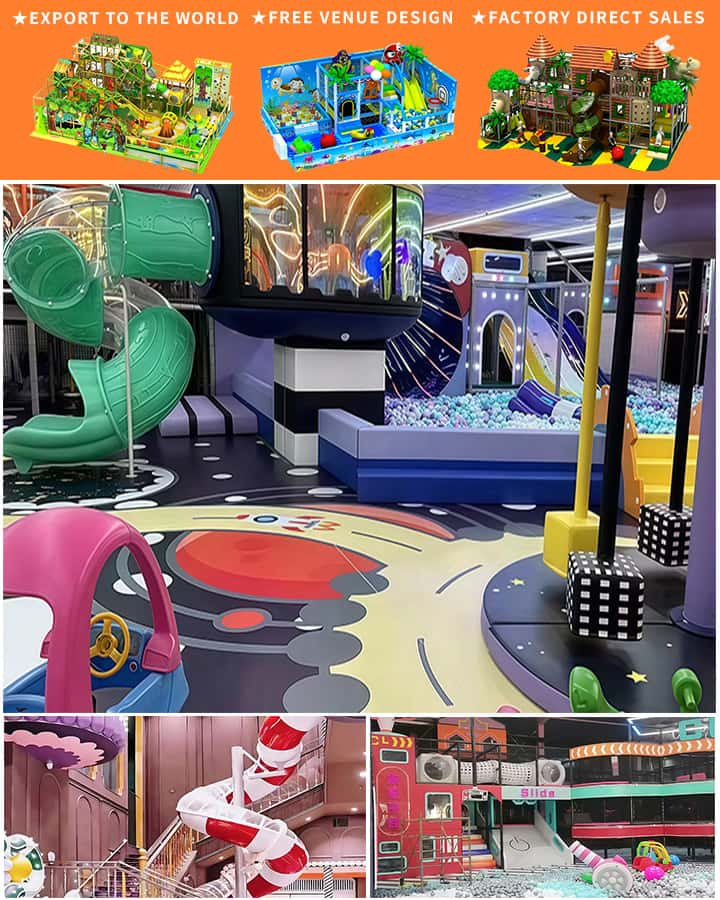Creating an engaging and entertaining indoor play area can be a rewarding experience, whether it’s for your own children or to attract young visitors to your business. With the growing popularity of indoor playgrounds, selecting the right equipment is crucial to ensure safety, fun, and developmental benefits for kids. Here’s a comprehensive guide on how to buy indoor play area equipment that meets your needs.
Assessing Your Space and Needs
The first step in buying indoor play area equipment is to assess the available space. Whether you have a small room or a large facility, understanding the dimensions will help you choose appropriately sized equipment. Measure your space carefully and consider factors like ceiling height, floor support, and doorway sizes to ensure that the equipment fits comfortably.
Additionally, think about the age group and number of children who will be using the equipment. Different age groups require different types of play structures to ensure both safety and developmental appropriateness. For toddlers, soft play areas with low-height climbing structures are ideal. For older children, more challenging elements like slides, rope ladders, and interactive panels might be preferred.
Safety First
Safety is paramount when it comes to indoor play area equipment. Look for products that meet national and international safety standards such as ASTM (American Society for Testing and Materials) and EN (European Norm). Ensure that the materials used are non-toxic and sturdy, and check for certifications from reputable safety testing organizations.
Non-slip surfaces are essential to prevent injuries from falls. Rubber mats and foam flooring are excellent options for cushioning impact areas. Also, make sure the equipment has no sharp edges, pinch points, or exposed hardware that could harm children.

Types of Indoor Play Equipment
There is a wide variety of indoor play equipment available, catering to different interests and developmental stages:
Climbing Structures: Climbing walls, ropes, and ladders are great for developing motor skills and encouraging physical activity. Choose models with handholds and footrests that are appropriate for the children’s age and ability level.
Slides: Slides add an element of fun and excitement. Make sure they have smooth surfaces and gentle slopes to minimize the risk of injury. Some combination units include both slides and climbing structures.
Interactive Panels: These educational play panels stimulate cognitive development through activities like puzzles, shape sorters, and musical instruments. They are particularly useful in settings where learning through play is a focus.
Soft Play Areas: Foam blocks, ball pits, and soft play shapes provide a safe environment for younger children to explore and develop their sensory and motor skills. Opt for bright colors and diverse textures to keep them engaged.
Trampolines: Indoor trampolines offer a high-energy option for active play. Ensure they have safety nets and padded edges to protect against falls and collisions.
Durability and Maintenance
Investing in durable equipment ensures longevity and continued safety. Look for high-quality materials that can withstand heavy use, especially if the play area is intended for a commercial setting. Regular maintenance is also important—keep the equipment clean, inspect it regularly for wear and tear, and replace any damaged parts immediately.
Customization and Themes
Many suppliers offer customizable options to match your specific theme or color scheme. This is particularly popular in commercial settings where creating a cohesive and inviting atmosphere is crucial. From jungle themes with animal motifs to space-themed areas complete with rocketships and stars, the possibilities are endless. Customization not only enhances visual appeal but also creates a unique experience for children.
Budgeting
Finally, establish a budget before you start shopping. Indoor play area equipment can range significantly in price, so it’s important to find a balance between quality and cost. Remember that investing in higher-quality, safer equipment can save money in the long run by reducing the need for frequent replacements and repairs.
In conclusion, buying indoor play area equipment requires careful planning and consideration of various factors including space, safety, durability, and developmental appropriateness. By taking the time to research and select the right equipment, you can create an engaging and safe environment that provides endless hours of fun and learning for children.




